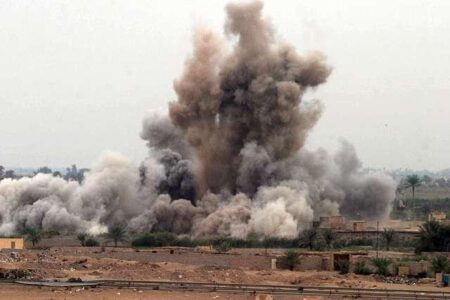
The links between Islamic State propaganda and terrorist attacks
In September of 2014, Abu Mohammad al-Adnani, the chief propagandist for the Islamic State in Iraq and Syria (ISIS) issued a chilling message.
Calling on followers of ISIS to take up arms against the group’s enemies, al-Adnani stated, “If you can kill a disbelieving American or European—especially the spiteful and filthy French—or an Australian, or a Canadian, or any other disbeliever from the disbelievers waging war, including the citizens of the countries that entered into a coalition against the Islamic State, then rely upon Allah, and kill him in any manner or way however it may be.”
By the end of 2014, ISIS-inspired attacks had been carried out in each of the named countries.
These acts of violence included the Queens hatchet attack, Saint-Jean-sur-Richelieu car ramming, and Parliament Hill shooting in October 2014, as well as the Joué-lès-Tours police station stabbing and Lindt chocolate shop hostage crisis in December 2014.
While the rapid fulfillment of al-Adnani’s call to action was striking, not every threat made by the Islamic State came to pass.
For instance, ISIS regularly threatened Rome, and particularly the Vatican, even going so far as to promise Christmastime bloodshed in 2017.
Yet no ISIS-inspired attacks were ever carried out in the Eternal City, despite its symbolic importance as a center of Western Christianity. Why, then, do some ISIS propaganda statements predict attacks and others do not?
In a recent article, we analyze whether ISIS’ use of propaganda predicted violence in Western democracies.
Evaluating this question is important for two reasons. First, it provides insight into how terrorist messaging may function in a world of remotely directed violence.
Second, it gives national security personnel some insight into which propaganda messages, if any, they should take seriously as predictors of violence.
In order to evaluate this relationship, we developed a database of ISIS statements about perceived enemy states.
We scoured editions of ISIS’s print magazines—Dabiq and Rumiyah—that were issued between July 2014 and December 2016, as well as speeches made during the same time period by Abu Bakr al-Baghdadi (the head of ISIS) and Abu Mohammad al-Adnani.
We identified each instance in which a country considered an enemy by ISIS was mentioned and categorized that mention as either symbolic—i.e. allegorical, religious, or deeply historical—or non-symbolic—i.e. tied to the contemporary world or recent past.
We also identified instances in which countries were described as posing a military threat to ISIS and classified those statements according to whether the enemy state was described as threatening ISIS with airstrikes or with ground forces.
We found that ISIS propaganda statements do predict terrorist attacks, but only when the target country is called out by ISIS for engaging in airstrikes (whether the country actually participates or not).
When ISIS specifically mentions a country’s participation in an air campaign, the probability of a subsequent terrorist attack increases by about 16 percentage points.
On the other hand, other kinds of military participation, including a country’s actual participation in airstrikes as well as sending ground troops to Iraq and Syria, are statistically unrelated to terrorist attacks.
These results suggest that while propaganda may play some role in mobilizing violence, it does not by itself motivate individuals to carry out attacks.
It is more likely that it provides guidance to those already sympathetic to ISIS’ message on exactly which countries are the proper targets, namely those that pose the greatest military threat to the group.
Importantly, we also found that media coverage of airstrikes also predicts attacks, though to a lesser degree: media coverage of a given country’s participation in air attacks against ISIS increases the probability of a terrorist attack against that country by about 2 percent.
This provides further evidence that it is the dissemination of information about a state’s engagement in military hostilities with the terrorist group that is most closely associated with attacks.
In the future, leaders should take threats from non-state actors seriously and understand the conditions that make certain threats more credible than others. Insurgent propaganda is more than mere “cheap talk.”
This appears to be particularly true when states are engaged in direct military activity against a relatively distant insurgent group.
Thus, we might expect threats by Houthi militant groups, who have been bombarded by Saudi airstrikes, to predict actual violence within Saudi Arabia.
By contrast, the statements of white supremacist groups within the United States may not predict violence as reliably, since they do not face direct military engagement from the government and can more easily coordinate.
Moreover, while the press is vital for the maintenance of democracy and for keeping political leaders in check, reporting can also result in unintended consequences if conveying the facts spurs audiences to engage in violence.
Both the media and politicians should be aware of the potential unintended consequences of publicizing military attacks against insurgents and prepare their responses accordingly.
Source: Political Violence At A Glance





